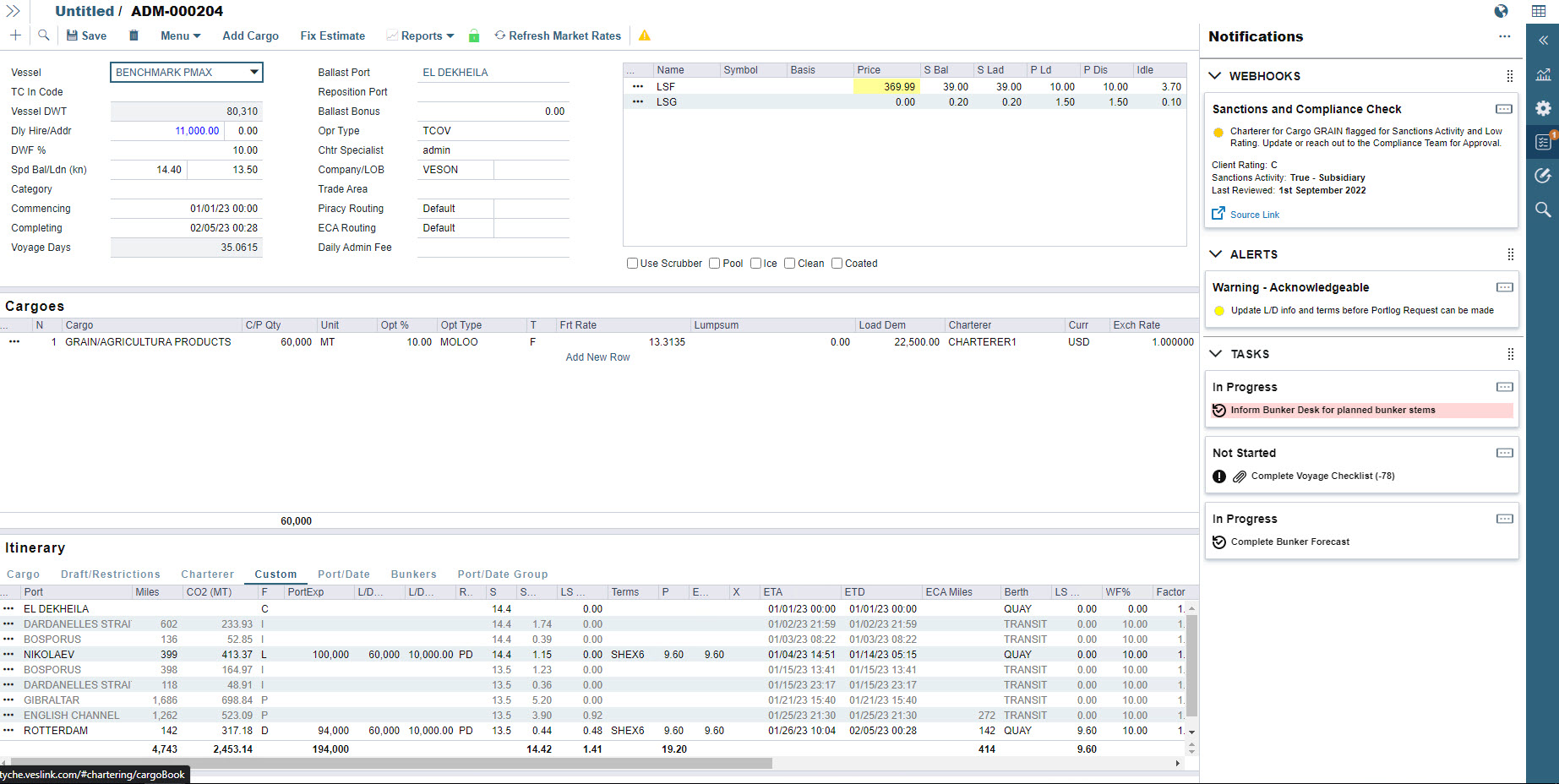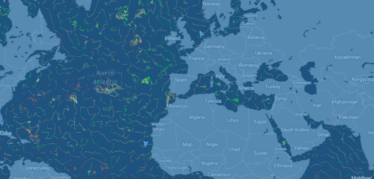Have you ever heard of a webhook?
If not, don’t worry – you’re in the majority.
A webhook is a real time, event-triggered integration to an external function or service that can pass back a standardized response.
Exhilarating, right? While it’s completely understandable that you may not find the technicality of webhooks as exciting as I do, what you will find exciting is what webhooks can do for your business.
For us tech nerds, webhooks are an exciting way to enhance your experience as a user by bringing more timely and relevant data to your attention at key points along your workflows.
In this blog, I’ll outline why you should care about webhooks and how they can advance your chartering workflows.
Why do webhooks matter?
Creating a standardized webhook structure that can send data from an estimate and display a response or mutation back to the estimate means the Charterer can receive crucial information as early on in their process as possible. This could be sanctions and compliance information regarding the vessel or counterparties in the estimate, estimated port time details, expenses, consumption information, speed, or weather data that can refine and improve the accuracy of the estimate result.
Having this information directly in the estimate increases efficiency by reducing the need to navigate across different systems to look up different data points. It provides additional information to support the Charterer’s decision making.
What you can do with webhooks
The optionality on the types of webhooks that can be created is nearly endless. Here are some key benefits to leveraging a webhook:
- Send estimate itinerary information out to a weather service that will provide back estimated weather factors or routing details that can then be applied directly to the estimate, updating the estimated days and P&L
- Use counterparty and vessel information to call out to a sanctions and compliance engine and have warnings or alerts sent directly back to the user informing them of whether they can use a specified vessel or counterparty.
- Pass estimate itinerary information to an analytics tool that will pass back congestion information back for the port and update the extra port days to determine if a laycan window is still achievable
- Send canal transit information to an agency system that can send back forecasted canal costs and apply that directly to the estimate to determine the impact to the P&L and determine how it compares against other routing options

By leveraging our robust Tasks & Alerts Rules engines in VIP, webhooks can be structured to create continuous integrations with in-house or third party data sources. The webhook can then pull in external data and return a display back to the Notifications Panel in the VIP Voyage Estimator.
To learn more about how to use webhooks in the VIP Voyage Estimator, download the one-pager document below and share with your team members.



 Russ Hubbard
Russ Hubbard
 Aidan Williams
Aidan Williams